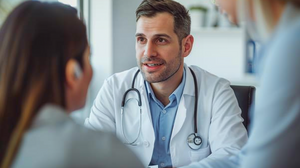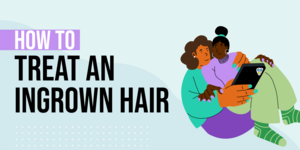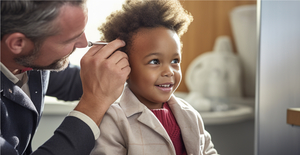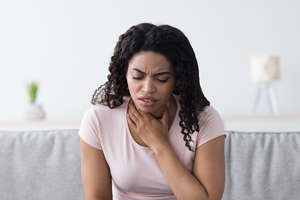Ear Wax Removal Near Me
Own a clinic? Add your location.
Help patients book appointments with you on Solv. It's free!
0 instant-book locations
Close To Home Center
Close To Home Center
OhioHealth Urgent Care, Grandview
OhioHealth Urgent Care
Close To Home Center
Close To Home Center
Close To Home Center
Close To Home Center
Nationwide Children's, Downtown Urgent Care
Nationwide Children's
Close to Home Center
Close to Home Center

MinuteClinic® at CVS®, W 5th Ave, Columbus
MinuteClinic® at CVS®

Urgent Care 24/7, Columbus
Urgent Care 24/7
Advanced Immediate Care, Martha Morehouse Medical Plaza
Advanced Immediate Care

MinuteClinic® at CVS®, N High St, Columbus
MinuteClinic® at CVS®
OSU Occupational Medicine
OSU Occupational Medicine
Maplewood Medical Center
Maplewood Medical Center
OSU Occupational Medicine
OSU Occupational Medicine

CVS MinuteClinic, CVS MinuteClinic
CVS MinuteClinic

MinuteClinic® at CVS®, E Main St, Columbus
MinuteClinic® at CVS®
FastCare inside Giant Eagle
FastCare inside Giant Eagle
Close To Home Center
Close To Home Center

Buckeye Urgent Care
Buckeye Urgent Care

MinuteClinic® at CVS®, S High St, Columbus
MinuteClinic® at CVS®

iMed Urgent Care
iMed Urgent Care
Own a clinic? Add your location.
Help patients book appointments with you on Solv. It's free!
About Ear Wax Removal
Ear wax protects your ears from dirt, bacteria, and other small debris that can damage your ear canal and hearing. However, too much ear wax can end up blocking your ear canal and can potentially lead to difficulty hearing. Knowing how to safely and effectively remove ear wax can help you protect your hearing and ear health.
About ear wax — why do we have ear wax?
Ear wax is a natural substance that protects your ears by trapping small debris like dust and bacteria that can enter and damage your ears. According to the National Library of Medicine (NLM), ear wax also protects the delicate skin inside your ear canal from water-related irritation.
Ear wax moves from the inside of your ears to the outside part of the ear canal, collecting dead skin cells, dirt, and hair along the way. Harvard Medical School reports that ear wax has antibacterial and antifungal properties that make it an effective natural ear cleanser. It adds that your ears will likely feel itchy and uncomfortable if they do not produce or contain enough ear wax.
Treatment of a common ear condition
Ear wax removal can help you prevent and avoid hearing loss, reports the NLM. The NLM adds, most cases of ear wax buildup can be treated at home using methods that soften the wax so it can be easily removed or washed out. It adds that in some instances, you may need to ask for help from your healthcare provider to avoid damaging your ears or causing an infection.
Difficulty hearing due to ear wax buildup is usually temporary and resolves after the blockage has been removed, adds the NLM. Hearing loss that remains after ear wax removal should be assessed and treated by your doctor.
The side effects of excessive ear wax
Excessive ear wax can lead to discomfort in the ears and hearing problems, reports the NLM. Ear pain, the sensation of having clogged ears, and noises in the ear known as tinnitus are common side effects of ear wax buildup, notes the NLM. You may also experience partial hearing loss that progressively gets worse.
The development of ear wax
Ear wax is also known as cerumen. It is a mixture of secretions from sebaceous glands and sweat glands in the walls of the outer ear canal, reports Harvard Medical School.
When you use your jaw to chew or talk, these secretions move through your inner ear canal to the outer ear canal, where they become dry and flaky. This allows older ear wax deposits to fall out or be removed more easily from your ears, notes Harvard Medical School.
Where wax comes from
Harvard Medical School describes ear wax as a natural ear cleanser that is produced by glands in your ear canal to protect your ears from harmful dirt and other debris. It adds that no one knows why some people tend to have more problems with excessive ear wax than others.
According to the University of Texas at Austin, older adults with coarse, wiry hairs in their ears tend to have more problems with ear wax buildup than others. People who wear hearing aids also tend to have more ear wax than others due to how some hearing devices are shaped in ways that prevent wax from moving easily out of the ear canal.
Ear wax removal tips
Many people use cotton swabs to remove ear wax buildup. However, many medical professionals advise against using this method, as it can push wax further into the ear canal, reports UC San Diego. It adds that the best way to clean ears is to use wax-softening ear drops that can be purchased from nearly any pharmacy.
The NLM suggests using solutions that can soften the wax in the ear, such as baby oil or mineral oil. Then, you can easily remove the ear wax from the outer ear canal using a small piece of cloth or tissue wrapped around your finger once you can see the wax.
The NLM also recommends consulting with a healthcare provider if you are having difficulty removing ear wax. A doctor can remove your ear wax using other irrigation methods or with a curette or suction device.
Tips for hearing-aid wearers
People who wear hearing aids should have their ear canals checked for excess wax every three to six months, suggests the NLM. Harvard Medical School adds that ear wax is responsible for between 60% and 70% of hearing aid damages. If you wear a hearing aid, ask your doctor to check for ear wax buildup no less frequently than every six months.
Ear Wax Removal FAQs
What will happen if I don’t clean my ears?
It’s possible to develop excessive ear wax if you do not clean your ears. Signs of too much ear wax include pain or itching in the ear, ringing in the ear, and a feeling that the ear is full or clogged, reports the National Institutes of Health (NIH). The NIH adds you may also experience odor or discharge from the ear, or hearing loss if you do not clean your ears.
Should I do anything to prevent a buildup of ear wax?
You do not need to do anything to prevent ear wax buildup. However, in the event it does build up, you should remove the ear wax from your ears or have it removed by a medical professional to prevent hearing loss and ear discomfort., reports the NLM
What symptoms can be caused by too much ear wax?
Too much ear wax can cause symptoms including earache, fullness in the ear, tinnitus, and partial hearing loss, reports the NLM.
Does it hurt to remove ear wax?
Ear cleaning methods for ear wax removal should not hurt or cause pain. If you do experience discomfort while removing ear wax, the NLM recommends consulting with a medical professional for help with removal.
If ear wax is removed, will my hearing improve?
In most cases, your hearing will return completely after the ear wax blockage is removed, says the NLM. Hearing loss caused by ear wax buildup is usually only temporary and lasts until you get your ears cleaned.
How often should I remove wax from my ears?
The NIH says your ear wax should come out naturally on its own when your body no longer needs it. It adds that you should only remove wax from your ears if you are experiencing symptoms of too much ear wax or you can see the wax near the end of the ear canal
Is removing ear wax costly?
The cost of ear wax removal depends on the method you use, reports the NIH. Your healthcare provider may be able to recommend the best ear wax removal method for you based on your budget and income.
Do cotton swabs remove wax from the ear?
Cotton swabs can push ear wax deeper into the ear canal, which can damage your eardrum or the sensitive skin inside the ear canal, reports the NIH and NLM. The NLM recommends using other ear cleaning methods for safe, effective ear wax removal.
Where can I get ear wax removed?
Ear wax can be removed by your primary care doctor or a doctor specializing in ear, nose, and throat health. Use Solv to find an ear wax removal provider today and book a same-day or next-day appointment directly from the website.

Updated on Apr 25, 2025
Solv has strict sourcing guidelines and relies on peer-reviewed studies, academic research institutions, and medical associations. We avoid using tertiary references.
Related Searches
DOT Exam
Ear Wax Removal
Physical Exam
Sports Physicals
A1C Test
Allergy Testing
Basic Metabolic Panel
Blood Test
CMP Test
COVID-19 Antibody Test
Cholesterol Test
Diabetes Test
Drug Test
Glucose Test
Hepatitis test
Mono Test
RSV Test
STD Testing
Strep Test
TB Test
Urinalysis
Vitamin D Test
Aetna Urgent Care
Blue Cross Blue Shield Urgent Care
Cigna Urgent Care
COVID-19
Flu
United Health Urgent Care
» All servicesEveryday Healthcare, Simplified
Expert advice to help you live your best life









